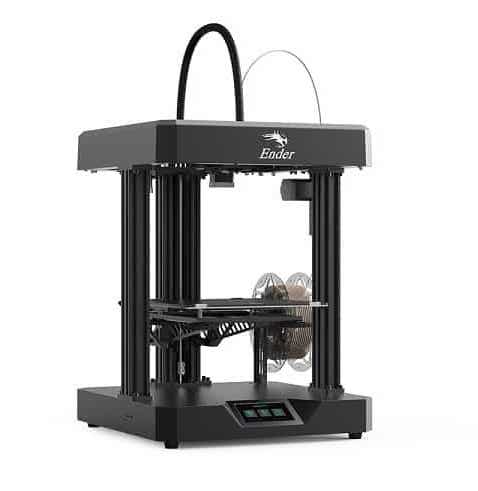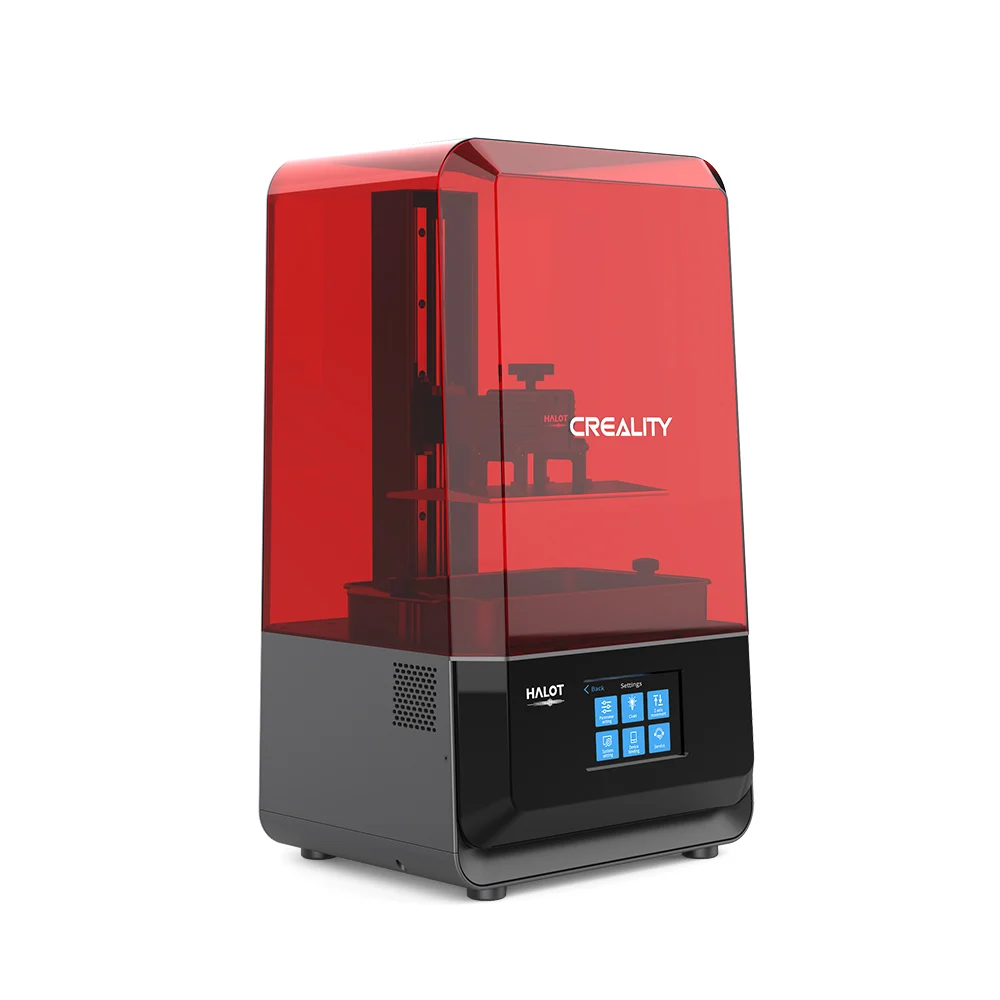Compare Ender 7 vs Halot Lite
Comparison between the best 3D printers
Choose the best 3D printer at the best price. The cheapest 3D printers are here.
Buy a 3D printer here with 3D Fila.
 |
 |
|
| Model | Ender 7[BUY Ender 7] |
Halot Lite |
| Printing Material | Filament | Resin |
| Buy Filament for Creality 3D Ender 7 | Buy Resin forCreality 3D Halot Lite | |
| Estimated price | $429,00 | $400,00 |
| Manufacturer | Creality 3D | Creality 3D |
| Release Year | 2021 | 2021 |
| Print Volume [mm] | 250x250x300 | 192x120x200 |
| Printer Size [mm] | 430x460x570 | 330x301x572 |
| Weight [kg] | 17,2 | 10,6 |
| Power Loss Recovery | YES | NO |
| Maximum Resolution [mm] | 0,1 | 0,01 |
| Processor | Creality CR-FDM V.2.4.S1_V101 32bits | |
| Display | Display touchscreen 4,3'' | Display touchscreen 5'' |
| Power Supply | 110/220V / 350W | |
| Connectivity | SD / USB | SD / USB |
| Operating systems | Windows, Mac, Linux | Windows, Mac, Linux |
| Date of registration in the system | 2022-11-04 | 2022-11-04 |
| Release date | 2021 | 2021 |
| Extra features | Crealitys Ender 7 printer offers remarkable print speeds, utilizing CoreXY kinematics for precise and fast movement. With a 250x250x300mm build area, dual direct extruder, and custom hotend, the Ender 7 is capable of printing at high speeds, although quality may suffer on smaller prints. Assembly is relatively straightforward, but the machine is noisy and can get hot. Its true speed potential is most noticeable on larger prints, where it outperforms its competitors. | Crealitys Halot Lite printer stands out in the mid-size resin 3D printing segment, with a build volume of 192 x 120 x 200 mm and 50 micron resolution. It offers a monochrome LCD for fast and durable printing, and an upgraded light source that ensures over 80% uniformity across the print bed. It includes Wi-Fi connectivity for remote control and updates, an ARM Cortex CPU for efficient performance, and is compatible with Halot Box and Lychee slicing software. It also has an activated carbon filter to reduce odors. |
| Support for multiple colors and materials (AMS and CFS) | NO | NO |
Notes * |
||
| Cost-benefit | 7 / 10 | 8 / 10 |
| Hardware | 2 / 10 | 1 / 10 |
| Tela | . | . |
| Print volume | 4 / 10 | 3 / 10 |
| Performance | 2 / 10 | 9 / 10 |
| [BUY Ender 7] |
Conclusion |
| In comparing the Ender 7 and the Halot Lite, both of which are manufactured by Creality 3D and released in the same year, several key differences and strengths become evident. The Ender 7 stands out with its larger print volume and high-speed capabilities, thanks to its CoreXY kinematics. It is particularly well-suited for larger prints, although this might come at the expense of quality for smaller items. The printer features a robust build and notable power loss recovery, which adds a layer of reliability for users concerned about interruptions during prints. However, it does have some downsides, such as being relatively noisy and generating more heat during operation. In contrast, the Halot Lite excels in the resin printing category with its impressive resolution and uniformity across the print bed. Despite its smaller build volume, it compensates with features like Wi-Fi connectivity and an upgraded light source for enhanced print quality. It also addresses user comfort with an activated carbon filter to minimize odors from resin printing. When considering cost-effectiveness, the Halot Lite demonstrates a stronger value proposition, particularly with its more favorable performance ratings and user-friendly features, making it suitable for those focused on detail and precision in smaller prints. However, if large-scale printing and speed are priorities, the Ender 7 becomes the more appealing option despite its higher noise levels and potential loss in quality for smaller jobs. Ultimately, the choice between the two printers should be guided by specific printing needs: opt for the Ender 7 for speed and larger prints, or the Halot Lite for high-resolution, detail-oriented projects. |

